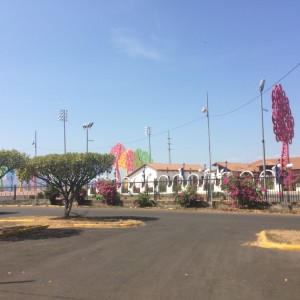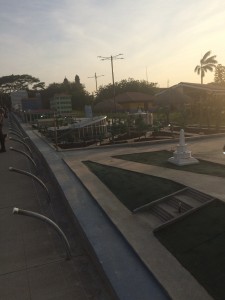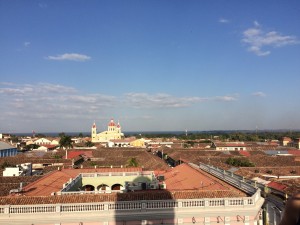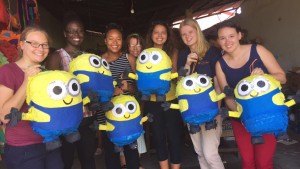All too often, United States citizens think that all of Latin America is the same. Last week, I had the opportunity to go to Nicaragua, where I saw first hand that is not the case. Nicaragua is right next door to Costa Rica, but the differences were obvious as soon as we crossed the border. Nicaragua is much poorer than Costa Rica, and even the way streets and houses look is just different. We were only there for ten days, but our schedule was very full and we learned a lot!
One of the first differences I noticed about Nicaragua was the poverty. Nicaragua is one of the poorest countries in the Western Hemisphere. For four out of the ten days of our trip, we stayed with host families in Ciudad Sandino, a small city just outside of the capital city, Managua. As soon as we got to our host families, we noticed that their living conditions were definitely less than we were used to. However, we also quickly noticed their warmth and kindness to us. On the first night, we were invited to play kickball with some kids in the street! It also amazed me to see the sense of community this little town had. Everyone seemed to know each other and wanted to spend time together. Definitely a contrast to the fast-paced city life that is so often valued in the United States.
This is from our tour of Managua, the capital city. It is quite beautiful!
This is a miniature model of Managua before nearly the entire city was destroyed in an earthquake in 1972. One of my favorite parts of our tour!
One of the most powerful experiences on the trip happened a few nights in. After two days in Ciudad Sandino, we left for a rural community that was very poor, El Bonete. It felt like we were driving in the middle of nowhere for a very long time before coming upon a little village. Most families there did not even have indoor plumbing. However, once again we were immediately overwhelmed with their hospitality. They put together a community dinner/gathering for all of us at night, and we got to dance and play games with all of the kids! Later on, we got to hear testimonies from people in the community who were affected by the civil war in the 1980s. We had learned about this in class, but hearing testimonies of people who actually got displaced from their families during that time was very powerful.
One of the most powerful experiences for me in the community was hearing one of the community leaders talk about his impressions of the United States. He had been there a few times and he said he could not believe how much stuff there was and how much waste he noticed. His impression was that people are not very resourceful and throw away lots of things they could use. He also noticed that most people don’t think twice about saving energy or taking care of the environment. Again, this is something I had known in my head but it never really hit home until I heard it from someone from the outside. What struck me the most, though, is how kind everyone was to us even if they resented some things about our country. Rather than telling us how horrible we are, they just wanted us to hear their story and then go back home and think about how we can change.
The final place we visited in Nicaragua was the beautiful city of Granada. It is modeled after Granada, Spain, so the architecture is absolutely beautiful. It was a fun way to end our trip after some heavy, heart-wrenching experiences. We got to tour the city, eat gelato, and enjoy each other’s company. The Nicaragua trip was not only full of learning but full of fun!
View of Granada
One fun thing we got to do was make piñatas at an organization which helps adults with developmental disabilities. It was really fun to get to know them and help them with their work!




Leave a Reply